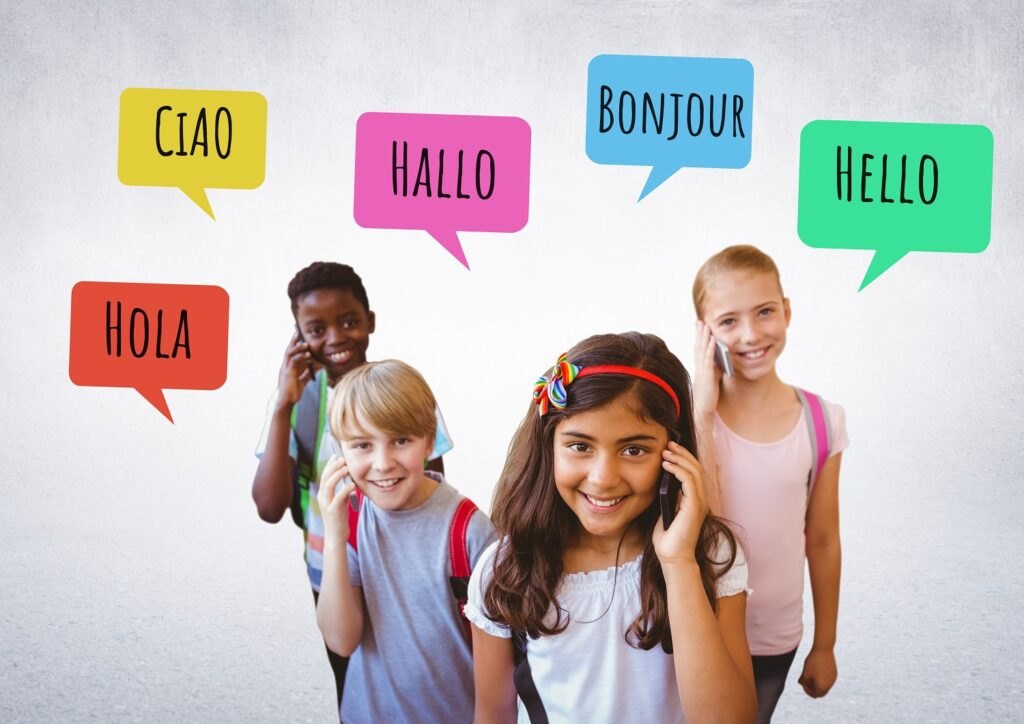In today’s global world, the ability to speak multiple languages is a huge advantage. That’s why it’s so important to develop multilingualism in our children from a young age. In this article, you will learn about the benefits of learning several languages and what practical steps you can take to support your child’s language development.
Benefits of Multilingualism.
Developing multilingual skills is not only a way to communicate more effectively in various situations but also to enhance creativity, flexibility of thought, and a better understanding of other cultures. Research shows that children learning multiple languages tend to perform better in concentration, problem-solving, and analytical skills. Additionally, multilingualism can improve brain functions by supporting neuron development and promoting cognitive flexibility.
How to Develop Multilingualism in Children?
- Start from a young age: Children’s brains are exceptionally plastic during early childhood, making it the perfect time to introduce different languages. Sing, read books, and tell stories in various languages to create a natural multilingual environment. Children at this age are like little sponges, ready to absorb new sounds and words.
- Cultural context: Introduce your child to the culture from which a particular language comes. This will help them understand the context and practical use of the language.
- Create a friendly language environment: It’s important to have a welcoming atmosphere for different languages at home. Encourage free expression in each of them. For example, you could establish one day of the week as “French Day” and another as “English Day.” This is a great way to boost confidence in using different languages.
- Consistency and continuity: Choose specific days or occasions when you focus on a particular language. This will help avoid confusion for the child and simplify the learning process.
- Fun and interaction: We learn best through play! Organize word games, puzzles, or small projects that engage the child in the active process of learning the language. Turning language learning into fun is the key to success. Use board games, educational apps, and word games that engage children while teaching new words. Remember that children learn best when they are playing and interested. Joint play will allow children to understand that languages are something enjoyable and interesting.
- Versatility:
- Use various sources: Use different sources such as movies, songs, educational games, or conversations with native speakers. This will help the child understand the language in different contexts.
- Contact with the language in practice: Nothing teaches as effectively as practice. Whether you have family in other countries or plan to travel, try to give children the opportunity to engage with different languages in practice. Visits to grandparents, letter exchanges, or online conversations can be great ways to practice communication in multiple languages.
- Joint projects and goals: Engaging in joint projects and goals related to different languages can spark children’s interest. You can learn a song in another language together, prepare a dish from a foreign cuisine, or create a shared dictionary with new words. It’s not just learning, but also nice moments spent together.
- Travel as a language adventure: If possible, travel together to countries where the language you want to develop is spoken. Traveling is not only an opportunity to learn about new cultures but also a chance to immerse yourself in a language environment. Children will have the chance to communicate in natural situations, which will certainly strengthen their language skills.
- Patience and a positive atmosphere: The process of learning multiple languages can be time-consuming, so encourage and reward progress. Create an atmosphere where the child will be eager to learn. Support your child, whether they achieve fluency in a given language or not. It is important to always approach this with a positive attitude and a smile.
Developing multilingualism in children is a wonderful investment in their future. The benefits of being able to speak multiple languages are invaluable. Remember that the key to success is to continue the learning process in a natural and fun way. Create an environment where the child has the opportunity to explore the diversity of languages and cultures. Let’s give our children the chance to become multilingual citizens of the world!


